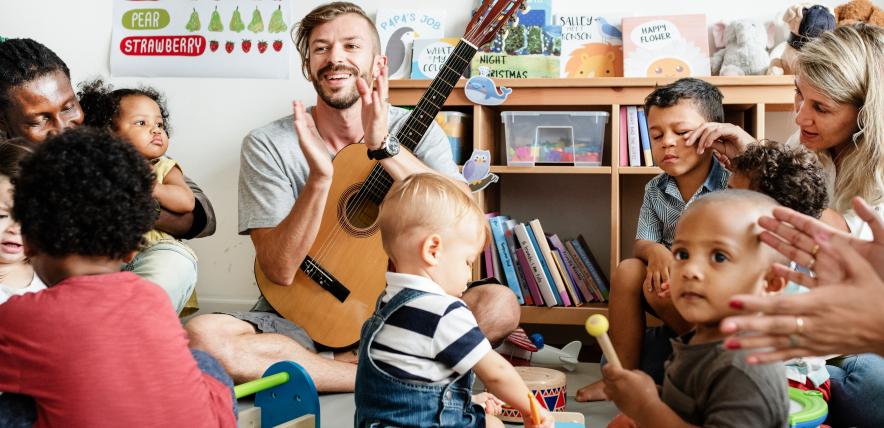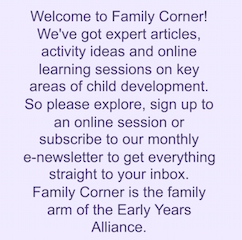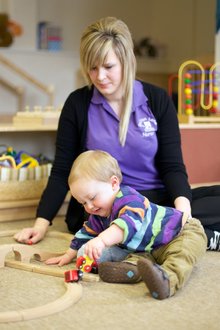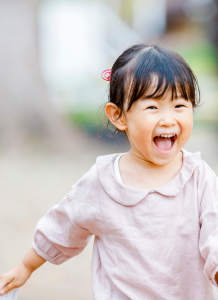This article was written by Lukas Farmer, Recruitment and Marketing Manager at Jo Jingles Limited.
Understanding the impact of parental involvement in early childhood music and movement activities is crucial for enhancing the developmental outcomes for children aged 0-5. Research highlights the effectiveness of culturally relevant and responsive teaching practices in making music education more engaging and fruitful for young learners.
As parents, we constantly seek the best for our children, especially during their formative years from birth to age five. It’s a magical time when they rapidly grow, learn, and explore the world around them. One of the most delightful and effective ways to enhance their developmental journey is through integrating music and movement into their daily routines. Here’s how you can harness the power of rhythm and dance to promote your child's growth and happiness.
The magic of music
From lullabies sung by a parent to playful tunes in a music class, melodies and rhythms offer more than just entertainment. Studies show that engaging with music can improve a child’s cognitive skills, such as memory and problem-solving abilities. Early exposure to music helps young brains to make the connections needed for every kind of intelligence. According to research highlighted by the National Institutes of Health, music activities stimulate parts of the brain associated with academic achievement, social skills, and emotional resilience.
Why movement matters
Just as crucial as melodies are, movement is an integral part of a child's early development. Dance and motion activities help refine motor skills, enhance coordination, and develop muscle strength. Furthermore, children learn spatial awareness and the principles of cause and effect (e.g., when I move this way, it makes this sound). Movement also encourages children to express themselves and can be a foundational tool for social learning and communication.
Integrating music and movement into daily life
Now, let’s get practical. How can you incorporate these elements into everyday life? Here are some fun and simple ideas:
1. Morning Dance Party: Start the day with a few songs and let your child dance around the room. It kicks off the day with energy and joy, and yes, it counts as exercise!
2. Instrument Exploration: Create a DIY instrument station with items from around the house. Pots, pans, and empty boxes can turn into drums or shakers. Explore sounds and rhythms together.
3. Sing Everything: Who says instructions can’t be sung? Whether it's cleanup time or getting ready for bed, turn directions into simple, catchy songs. This not only makes the tasks more fun but reinforces memory.
4. Nature Sounds Symphony: Take a walk outside and use the opportunity to listen to different sounds. Back at home, mimic these sounds with your voice or instruments and create a “nature symphony.”
5. Storytime with a Twist: Add music or create sound effects while reading stories. This enhances listening skills and makes reading an interactive experience.
6. Movement Games: Play games like 'Simon Says' with a musical twist, incorporating different movements like hopping, skipping, or twirling.
The benefits are clear
The benefits of integrating music and movement are backed by numerous studies. For instance, researchers have observed improved mood and social skills among toddlers who regularly participate in music-related activities. Movement activities are not just about physical development; they also provide a platform for children to learn patience, turn-taking, and following directions.
By making music and movement a regular part of your child's life, you’re not just spending quality time together; you’re actively contributing to their physical, cognitive, and emotional development. Remember, the goal isn't perfection—it's participation. So have fun, be silly, and enjoy the harmonious journey of growth with your little one!
With these tools, you can turn every day into an opportunity for development and joy, helping your child not just grow, but thrive. Dance, sing, and play your way through these precious early years!
Sources
-
EJ1183108.pdf (ed.gov) - Statistical Analysis of Elements of Movement in Musical Expression in Early Childhood Using 3D Motion Capture and Evaluation of Musical Development Degrees Through Machine Learning
-
Music And Movement In Early Childhood: Nurturing childhood (mightykidsacademy.com)
-
The Importance of Music and Movement | Child Development and Family Center | Northern Illinois University (niu.edu)
-
How musical training affects cognitive development: rhythm, reward and other modulating variables - PMC (nih.gov)
More blogs
Building bridges with beats: Parental involvement in music and movement
The role of music in enhancing daily routines for young learners




